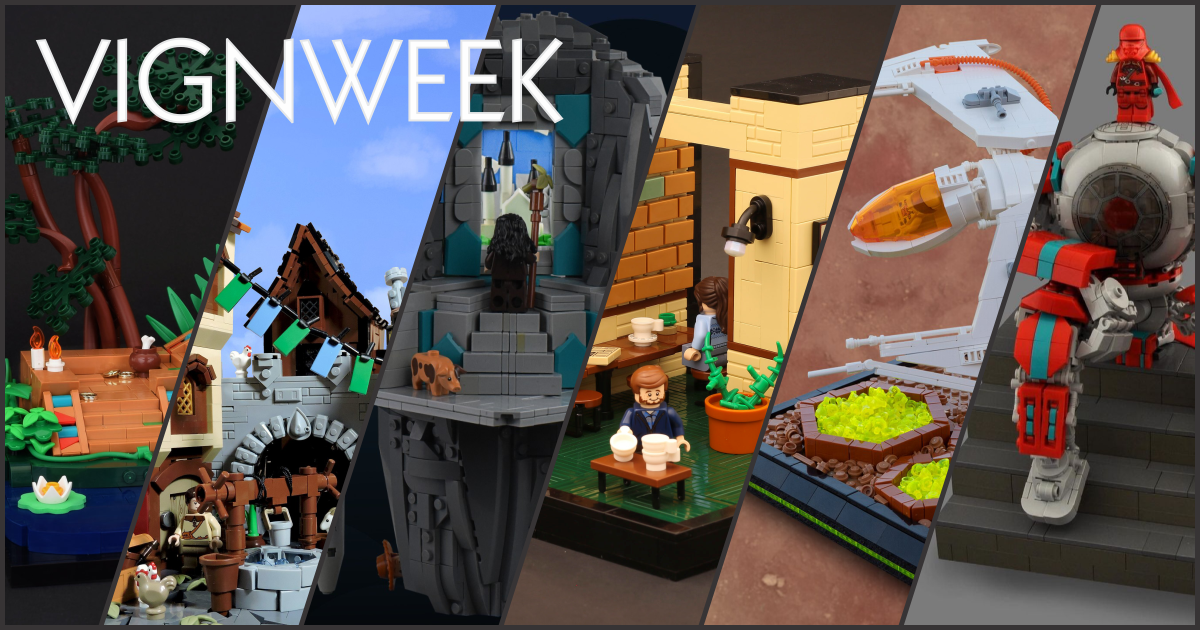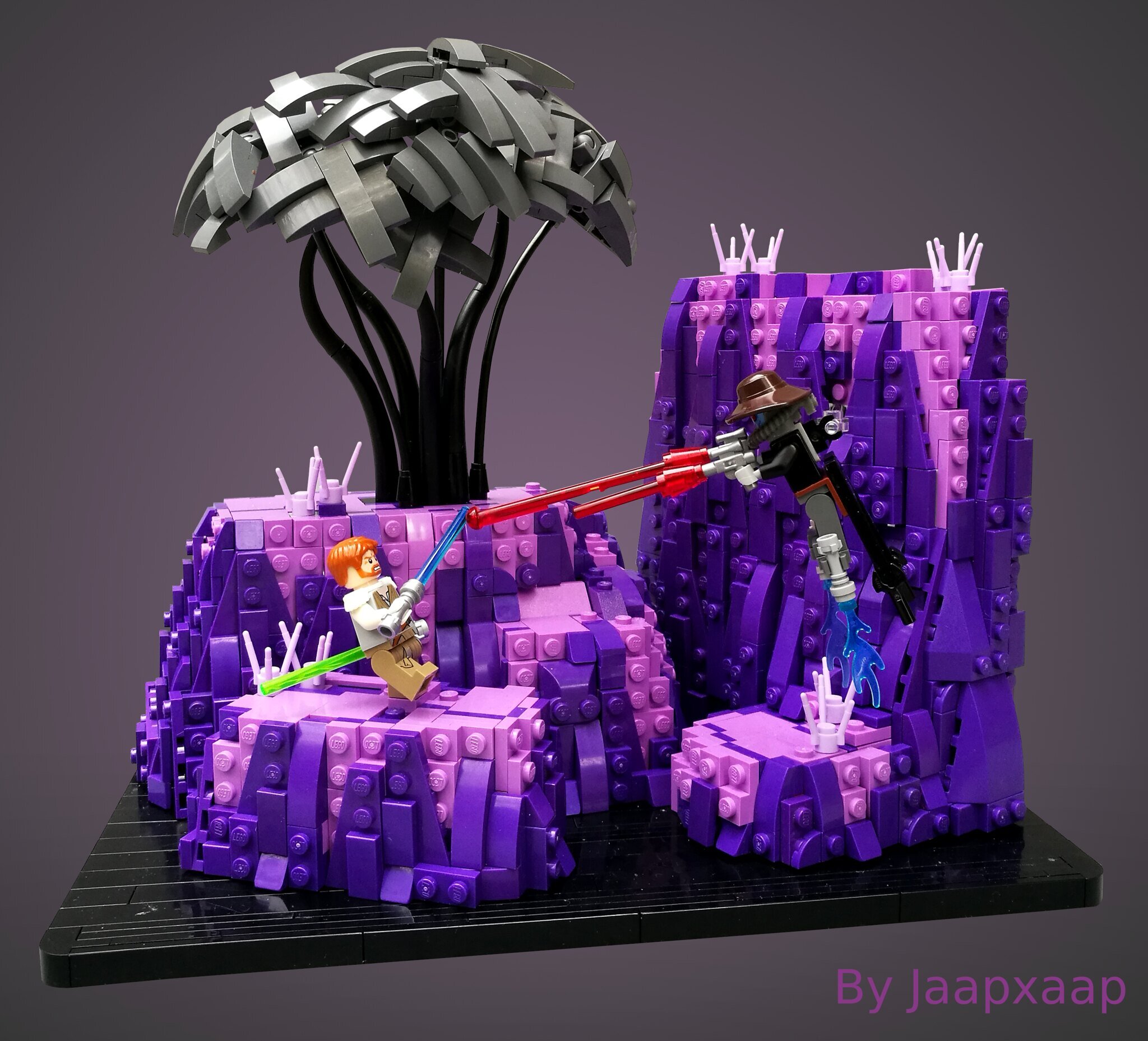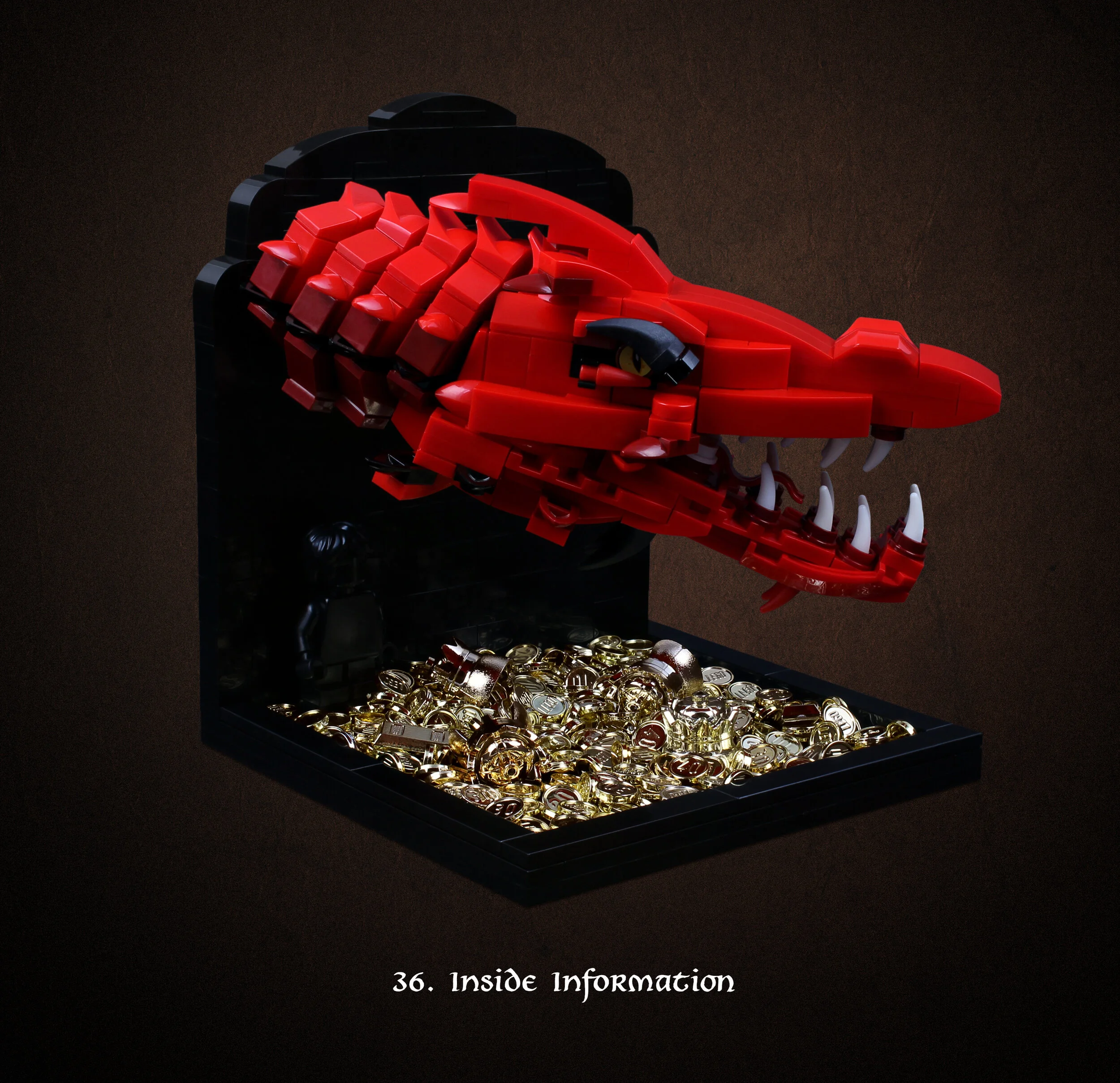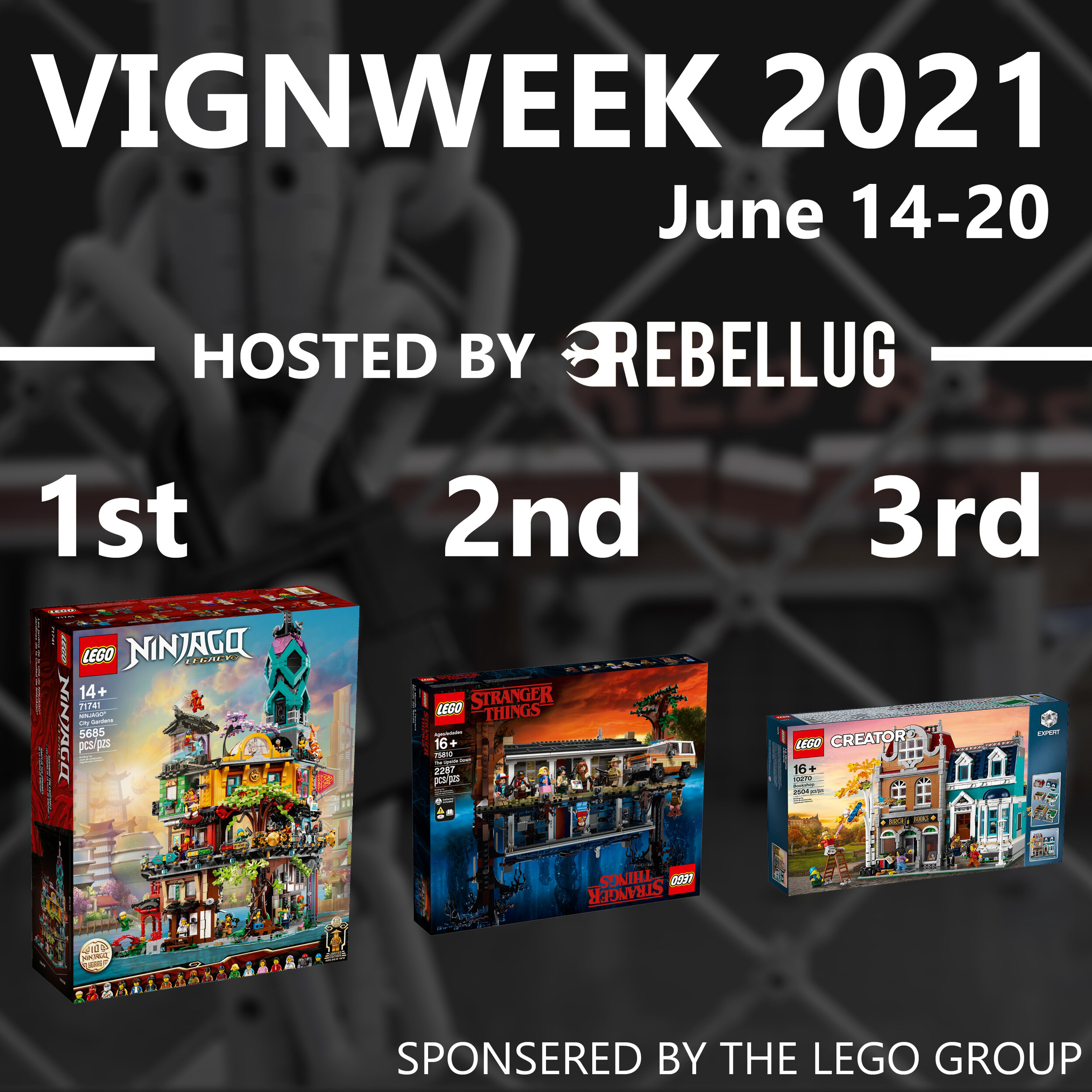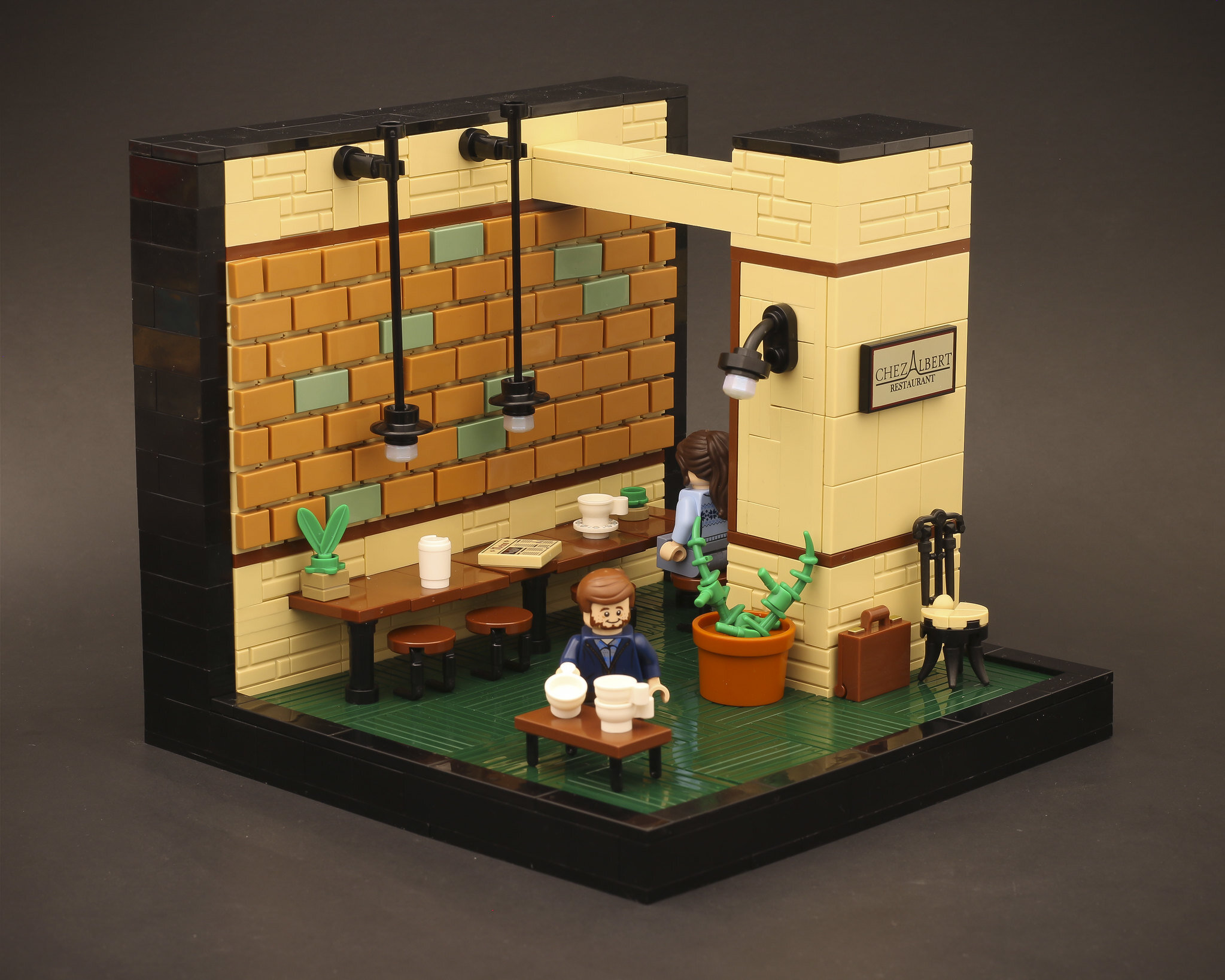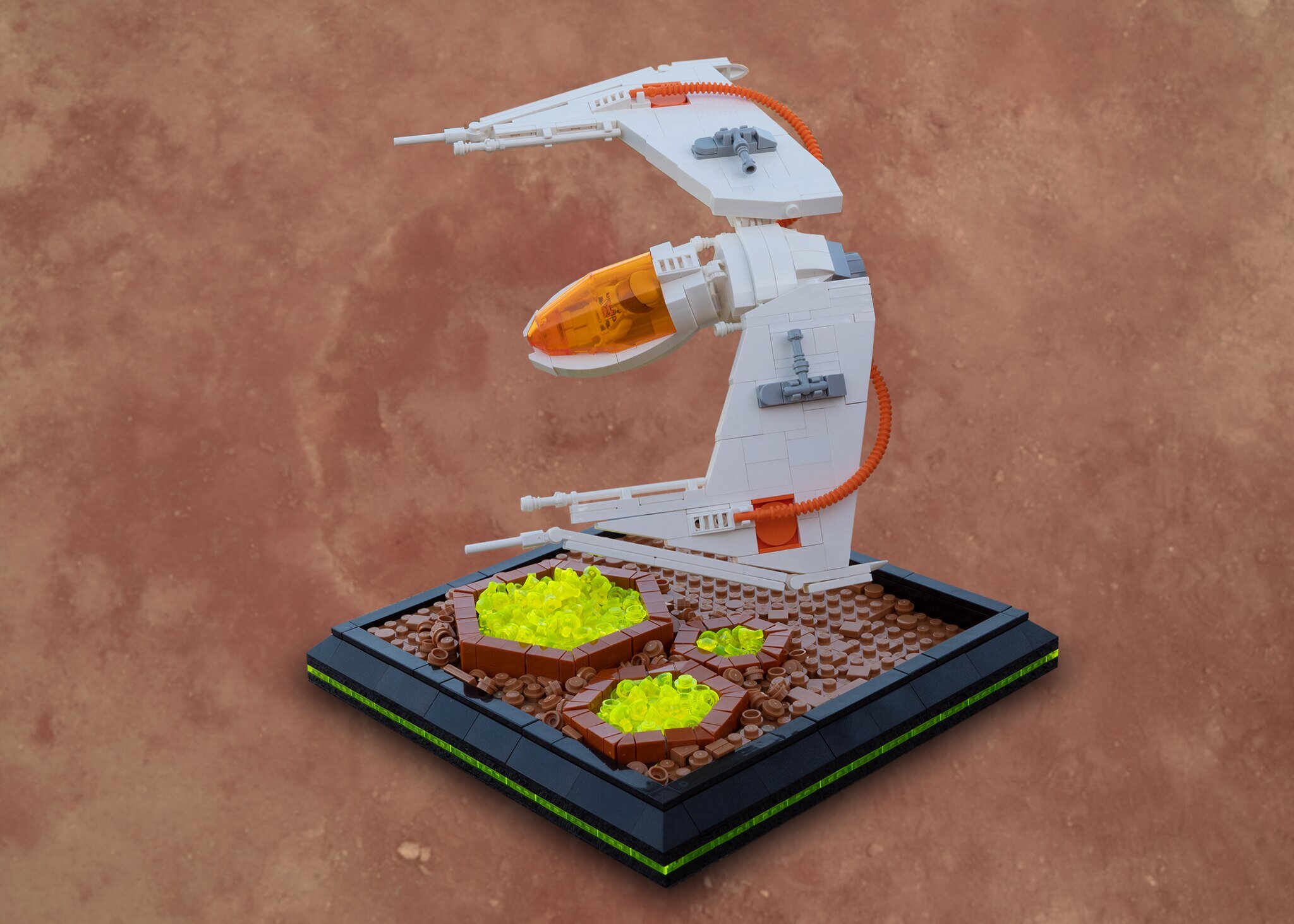Vignweek: A Veritable Variety of Vivacious Vignettes
/Hello everyone, today we will delve into the world of RebelLUG’s Vignweek. We’ll explore what the LEGO-building event is, who is behind the curtain pulling the strings, how does it work, chat with some amazing creators and more.
Here to assist us in our journey is my friend, and the man of many talents who ran Vignweek this year, Kevin Wanner. (You may recognize him from the article we wrote about that massive sword!)
Don’t mess with Texas… I mean cloud… I mean Kevin Wanner. And yes that sword is 100% LEGO.
Interview Time!
Doug: First off, thanks for joining us today Kevin, I know you've got a busy schedule running your local Bricks and Minifigs store, building your own MOCs, and of course completing the wrap-up activities for Vignweek. Can you start off by describing what Vignweek is?
Kevin: Vignweek is a RebelLUG hosted contest open to both members and the public. Builders are given 24 hours to build to a specific prompt for the first five days of the week and have 48 hours for the sixth and final prompt. We use the word Vignette loosely as the builds can be no smaller than 16x16 studs and no larger than 32x32, both of which are larger than traditional vignettes.
Doug: I understand that this isn’t the first time RebelLUG has held Vignweek—in fact, it's the third! How did it all begin and what would you say are the main evolutions of the contest over those three iterations?
Kevin: Yes, this was the third Vignweek. Each year we have had different challenges, and have made different adjustments trying to find the best fit for the contest. I have high hopes for Vignweek 2022—we have definitely learned some things that worked well this year and some things to make different for future years.
Doug: For everyone’s reference, here are two beautiful vignettes selected from the winners of prior years (Jaapxaap in 2019 and CheeseyStudios in 2020):
Doug: So I've heard some debate recently regarding "what is an official vignette?" Can you settle the question, at least with the Vignweek textbook response?
Kevin: Traditionally vignettes are small builds, usually 8x8 studs, up to maybe 12x12 in size. The RebelLUG contest increased the size giving builders a little bit more area to work with and more options for some good details. For the past three years, the contest has had a minimum of 16x16 and a maximum of 32x32. Other than that we have been very lax on the traditional vignette definition. The range in size allows builders to make irregular bases, another feature not found in the traditional vignette designs. Overall we set a size requirement but we’re not being too particular with the traditional definition of a vignette.
Doug: For our readers, here’s a classic example of a vignette:
Doug: It's always good to be clear with the participants of a contest about what you do and don’t expect, and frankly it is nice you give the builders extra room for creativity. Now let’s turn to running the contest (which must surely have been a complex and time-consuming task). Overall how would you say it went?
Kevin: I feel like logistically the contest ran very smoothly, and overall we had a very positive response. Unfortunately, I made a few decisions that turned out not to be the best, mostly the timing (School was out in my area, but apparently a lot of people were in finals,) and the overall theme of the whole contest. Both of which will definitely be addressed for next year.
Doug: Ok makes sense, and I’m sure people appreciate that you are willing to look for things to improve next time. So beyond that, I’ve got a number of specific questions I thought I'd get you to comment on—let's run through em rapid fire! What was the planning process like?
Kevin: I ended up planning out the contest over the course of a week. I looked at how the contest had been scored and run in past years and then tried to settle on a set of prompts.
Doug: How did you pick your judges? (And yes I’m still sorry I couldn't help out!)
Kevin: We always try to find builders who have a good eye for details and who can offer constructive criticism. Obviously, if you are a judge you are not able to enter the contest, so sometimes that can add a little extra challenge to find judges. We had five judges this year, and they all did an excellent job going through each build.
Doug: How are the themes for each round chosen?
Kevin: The past couple of years there has not been an overarching theme for the contest, and that was something I wanted to try. I came up with two: “Time” and the other I won’t mention in case we want to use it in the future.
Doug: What was your day-to-day effort like to run the show?
Kevin: I had to post the prompt exactly at the start time, and end submissions immediately from the previous day. Then I would post the winners from the previous judging. This was the most precise part of the day, and I had alarms set on my phone. The judges would then go through every single build that had come in and score them, and we would figure out who the winners were and I would prep all of the files that I needed for the next morning. Then throughout the whole day I would answer questions and give advice or insight as best I could for people looking for clarification.
Doug: How are prizes chosen and acquired and ultimately sent out to winners?
Kevin: The prizes are ultimately provided by LEGO, but they were selected by me. We have a budget to fit, but I was thinking about sets that are both fantastic builds—and have a lot of great parts for MOCs that way they could be enjoyed by anyone. I did unintentionally pick sets that I own, but I can attest that they are all great sets as well as parts packs.
Doug: Let’s take a quick detour to the other side of the event—participation! Though I've never participated, I understand the experience of competing can range wildly from reasonably relaxed (if you don't build for all of the daily challenges and build more to the minimum size)... to a grueling all-encompassing event (if you build large/complex vignettes for every prompt).
Two of our valiant BrickNerd contributors took up the gauntlet and participated this year so let's ask them how they thought it went. Geneva, how'd you find the experience?
Geneva: Vignweek was a blast to participate in, a bit of an exhausting blast of course, but what could be more worth giving up sleep for? I pretty much spent every waking hour for six days either building in reality or building in my head.
The intense competition pushed me to do better as the week went on. Although I only placed once, I feel like the levels of competition were so high that at that point it came down to judges’ preferences, so I’m not dissatisfied with how I did.
And besides the anticipation of seeing what the next prompt would be and where I could take it, there was also the excitement of knowing that a lot of other great builders were also taking their best shot at it and there would be plenty of top quality LEGO vignettes to admire the next day!
Doug: Thanks Geneva! Sounds intense but I'm feeling a wee bit of jealousy for all the fun. Check out her impressive entries below, and she also wrote up a blog post about the experience here!
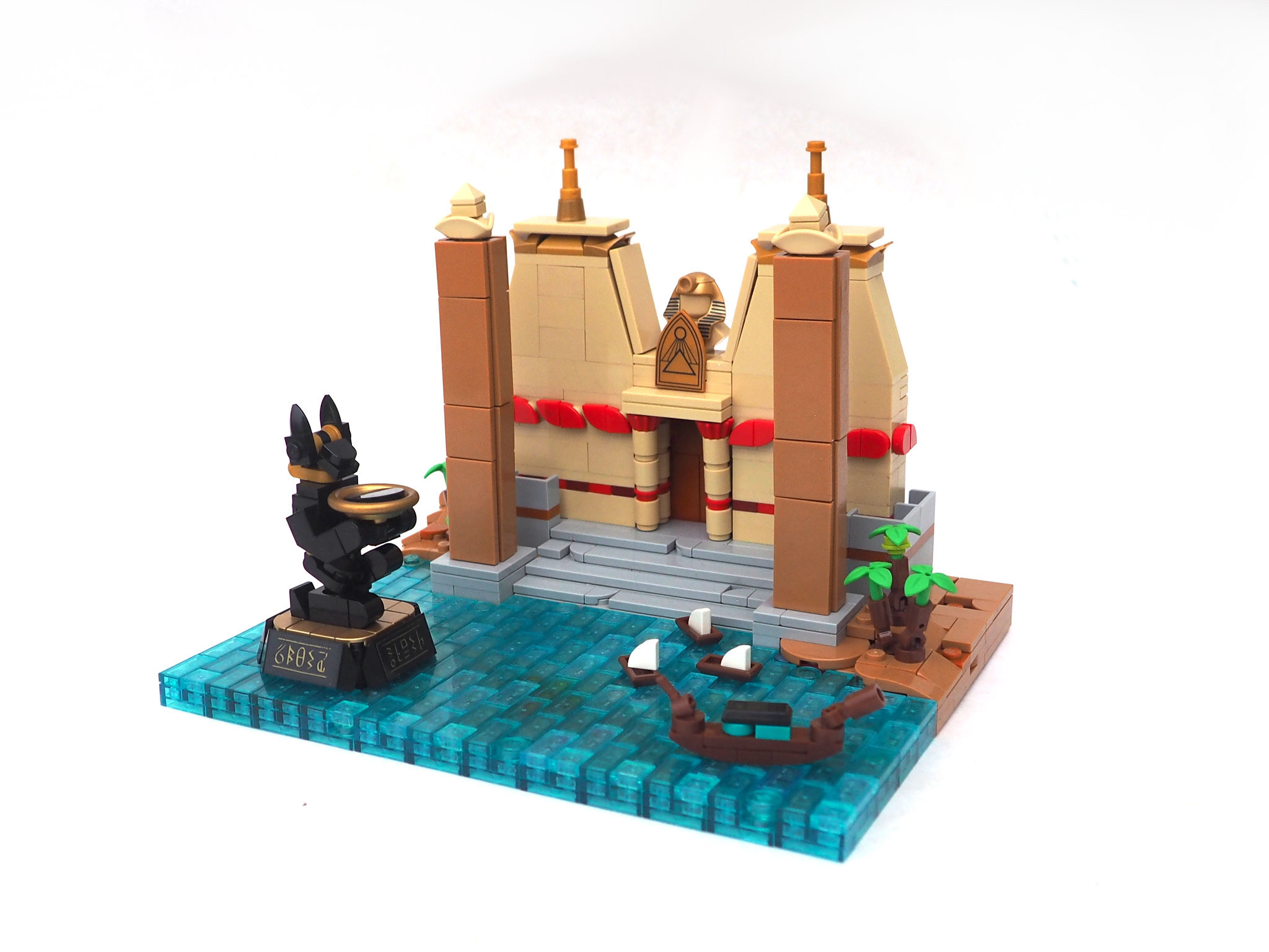


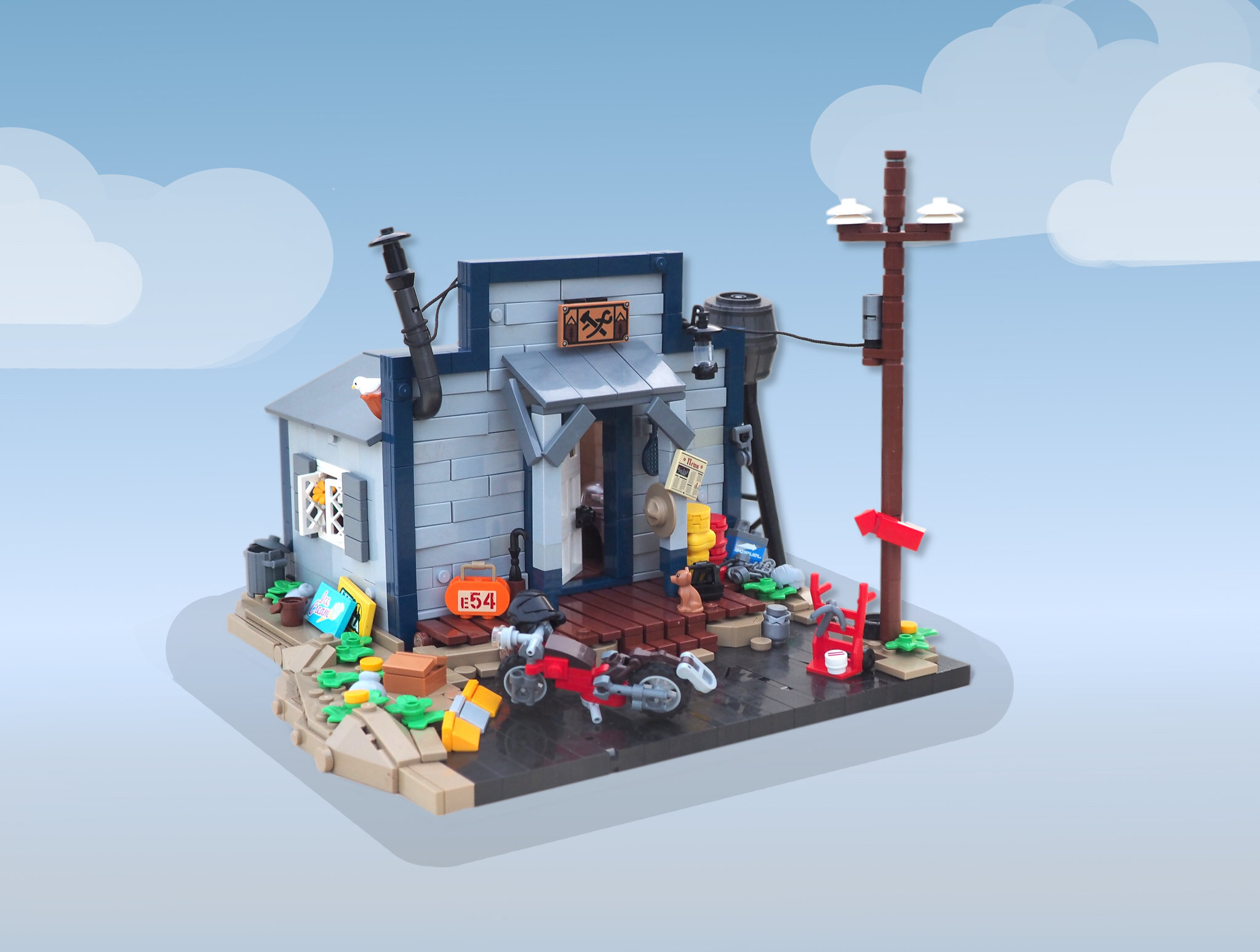
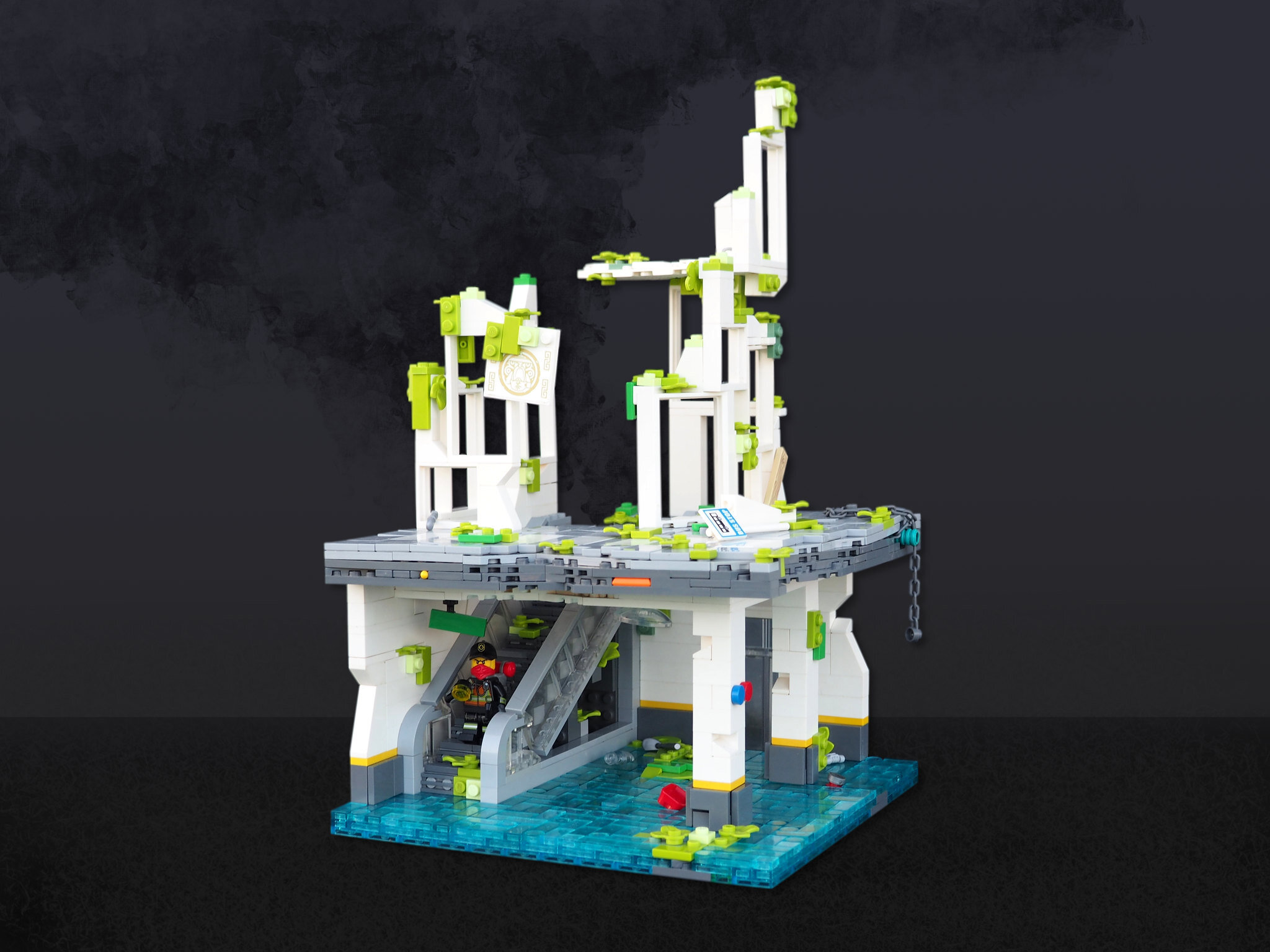
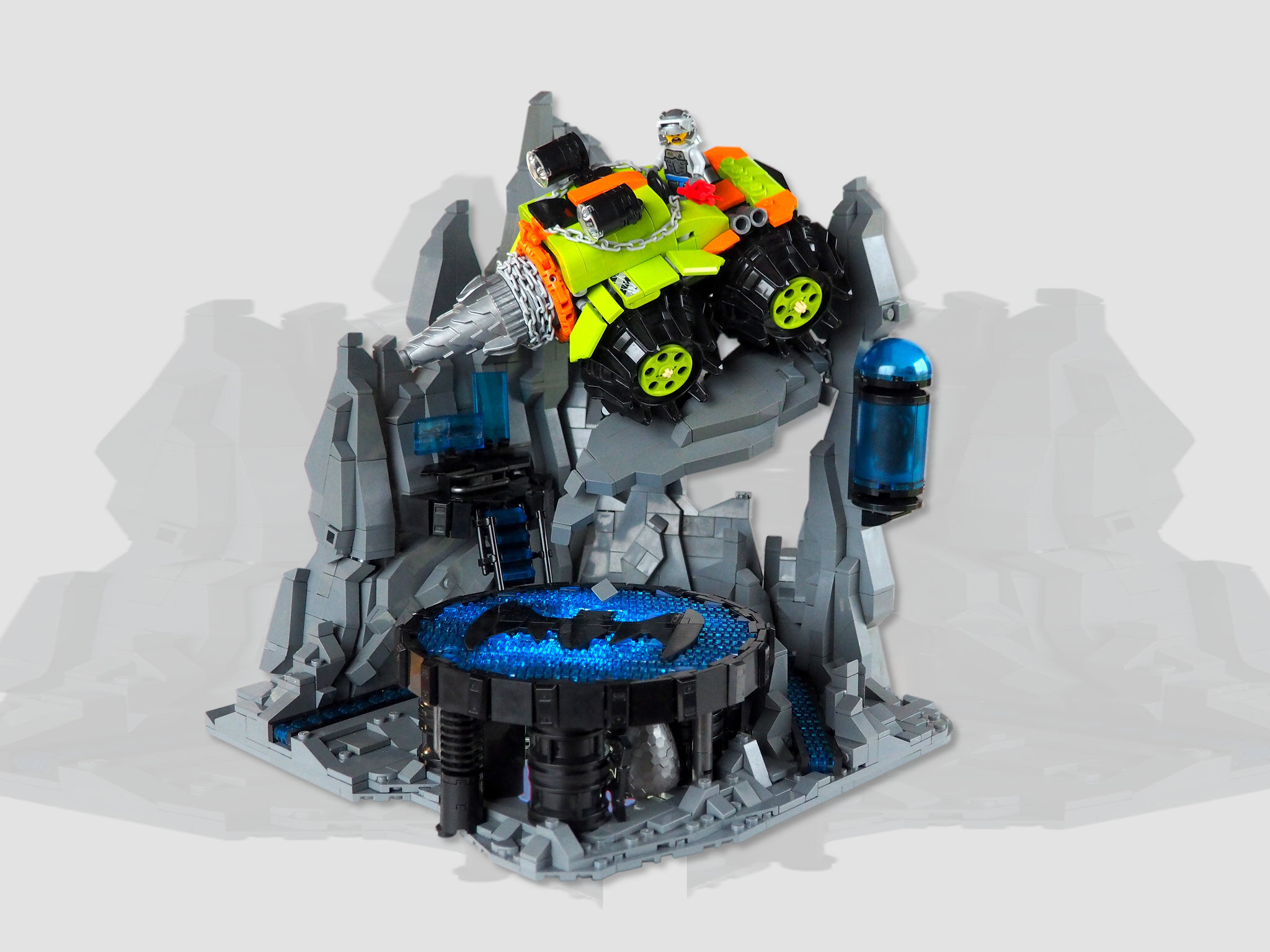
Doug: Ok with that let’s ping Simon. Simon, how did the experience go for you?
Simon: [static noise interspersed with incoherent noises and groans]
Doug: ...Simon is unavailable for comment. He's probably still in recovery mode after a brilliant but mentally and physically exhausting run culminating in the only perfect-score MOC of the entire contest! See below for a gallery of his builds, the round 6 build "Kai Fighter" attained a perfect score from all judges and of course won that round as you’ll see further below.
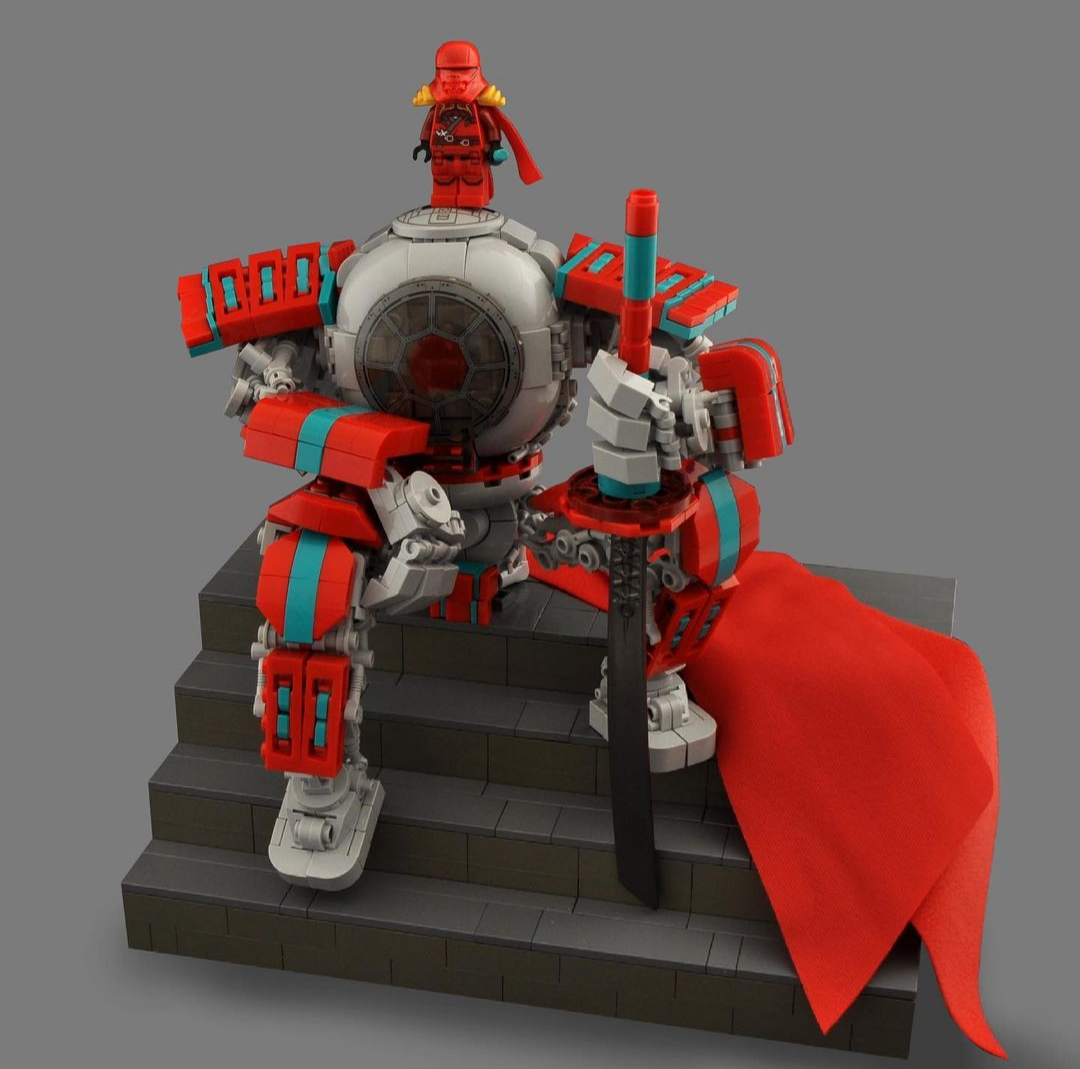
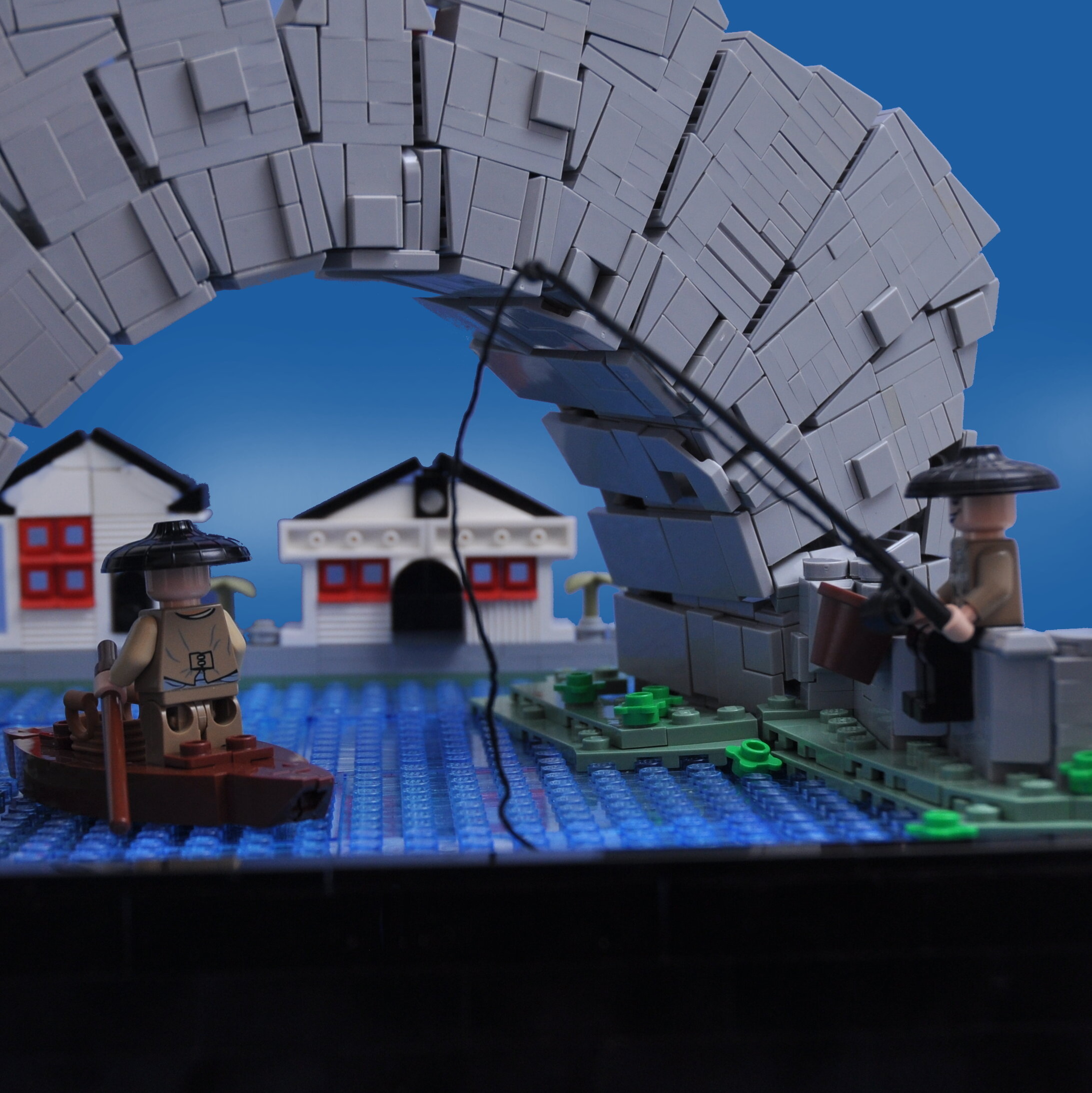
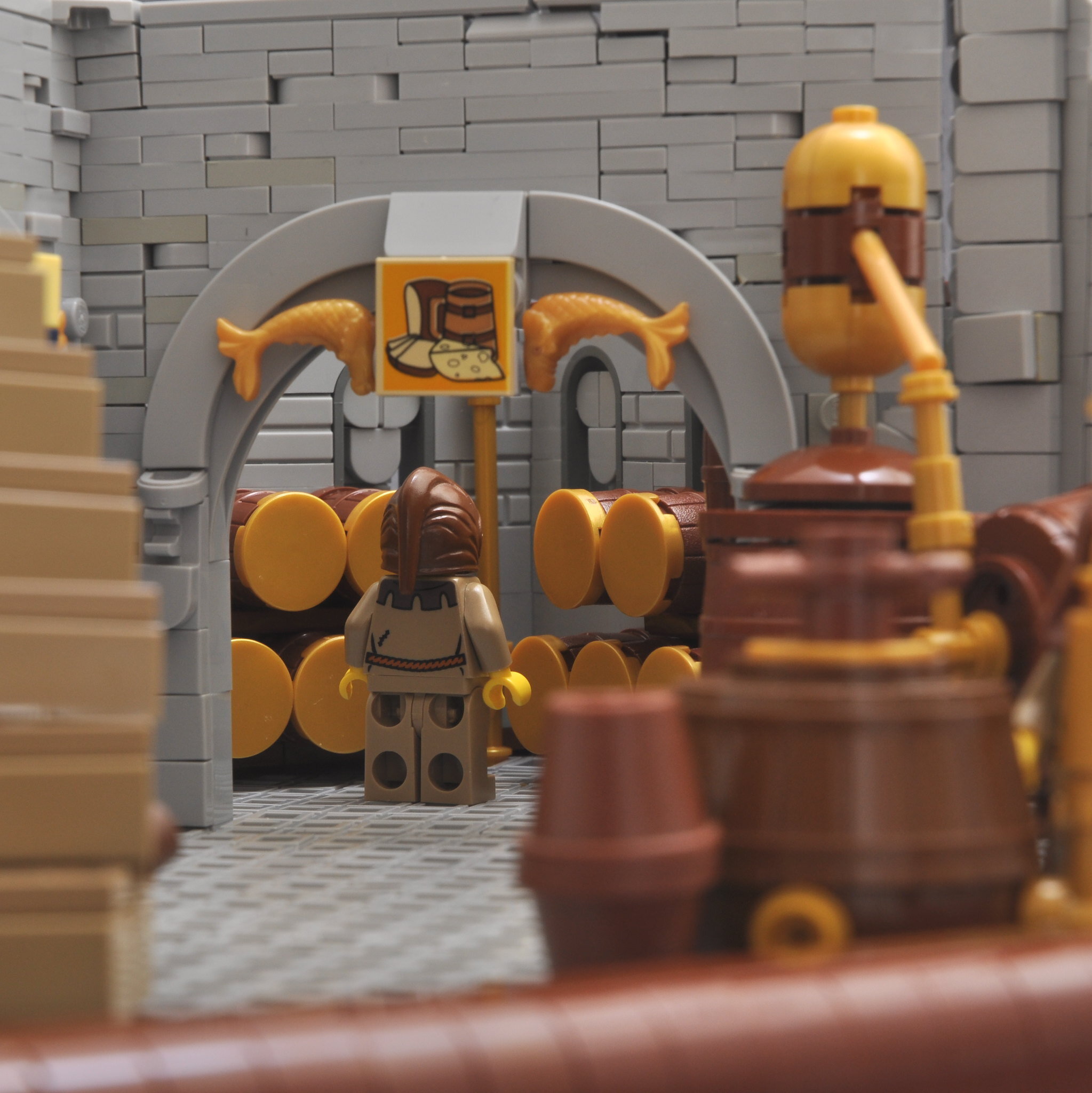
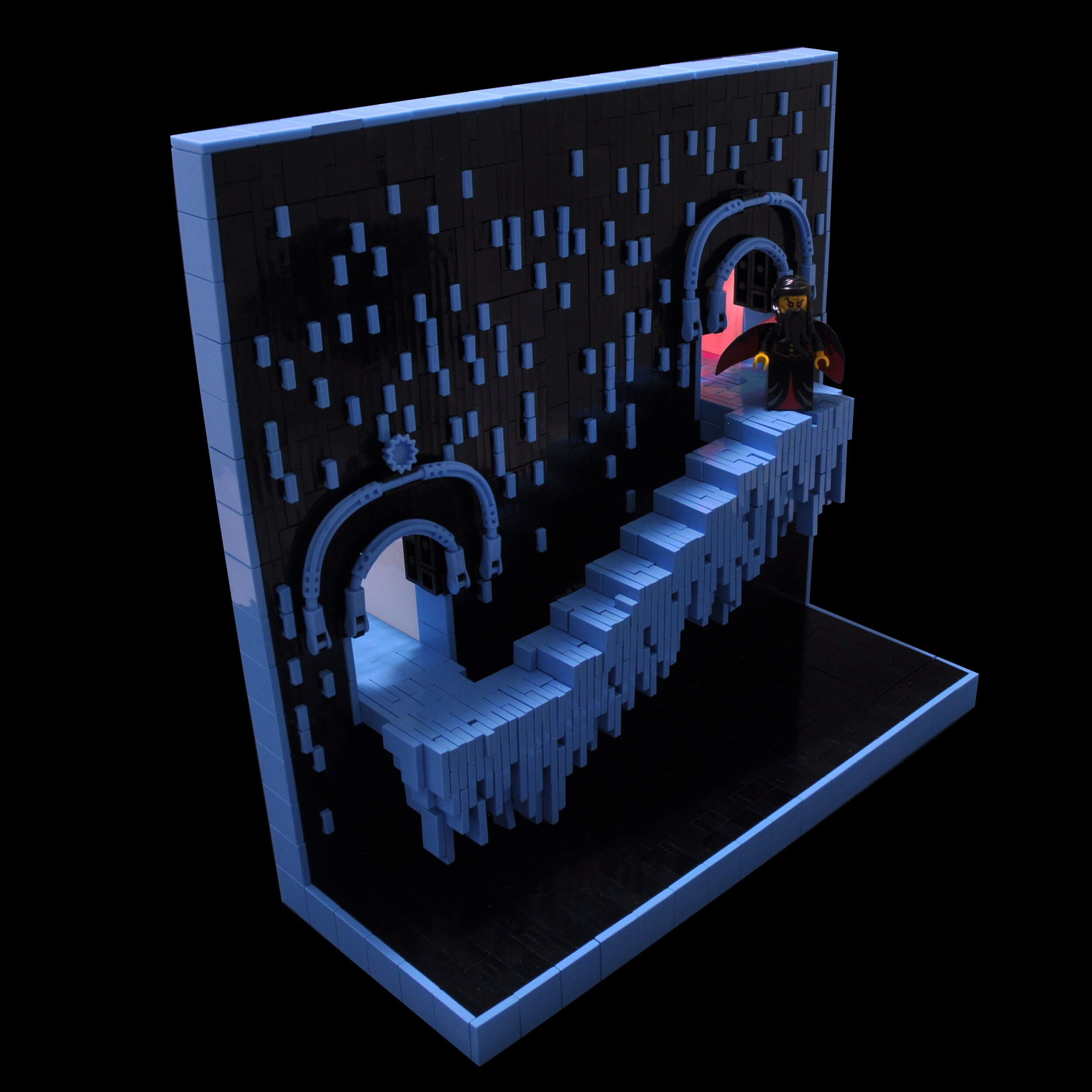


Round Results
Thanks to our readers for their patience waiting for the big payoff, so here it is below, a gallery of the winning builds from each round (along with the prompt for that round)!
Round 1: Ancient
Build something from an ancient civilization. About 500 AD or ANY time earlier. (Examples could be Rome, Ancient Egypt, Ancient China, Neanderthals, etc.)
Round 2: Historical
Build something from about 500 AD to 1800 AD. (Examples could be Castle, Vikings, Aztec, Pirates, etc.)
Round 3: Fantasy/Steam Punk
Build something set in a fantastical world ROUGHLY no later than the year 1900 (ANY time before is acceptable.) It can be your own concept (like Steam Punk, Fantasy Castle, Mythology, etc.) or it can be an existing IP (like Lord of the Rings, Pirates of the Caribbean, Dinotopia, Howl’s Moving Castle, or even LEGO themes like Dragon Masters, or Elves.). Remember to make it steampunk, fantastical, or otherwise imaginative.
Round 4: Modern Era
Build something from the 1800s to the Present Day. (Examples could be Western, Industrial Revolution, World Wars, Present Day etc.)
Round 5: Futuristic
Build something from the future. (Examples could be Post Apocalyptic, Sci-Fi, CyberPunk, Star Wars etc.)
Round 6: Mixed LEGO Themes
Build something mixing two DISTINCT themes from LEGO sets. These can be LEGO's own themes or different IP themes. You should mix these two themes into one cohesive build. (Examples could be mixing Star Wars and Ninjago, or Adventurers and Space Police, or Minecraft and Super Heroes, etc.)
Here is a list of every LEGO theme. Remember, just because it is on the list does not mean it is a good idea though... Remember to make the two themes distinct, mixing Marvel and City probably won’t look any different than just a regular Marvel build. The judges should be able to recognize the themes you chose from the build itself, but please include them in the description just in case.
The Overall Winner
And the overall victor was… drum roll please… Jake! See his full set of stunning builds below:
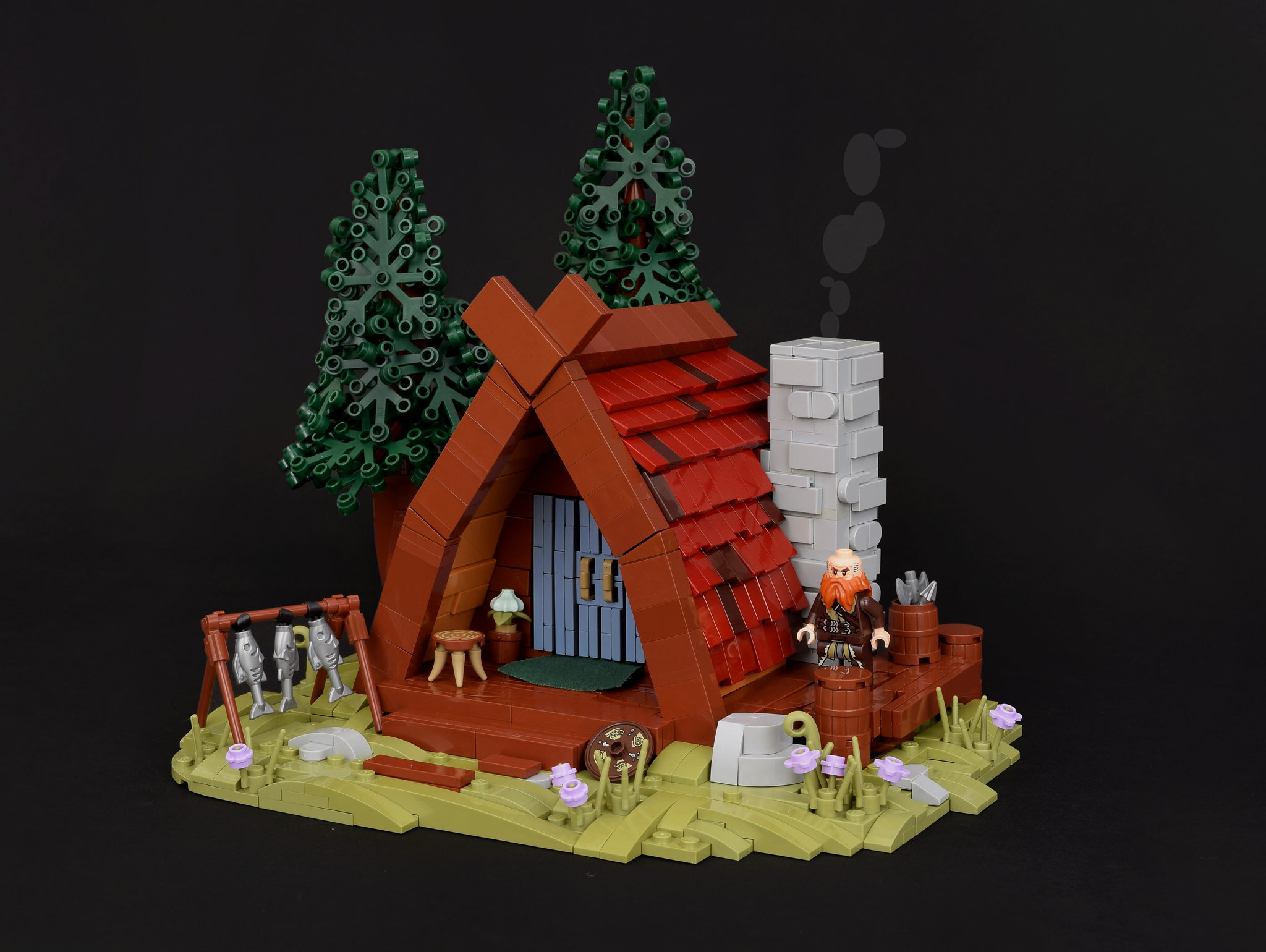
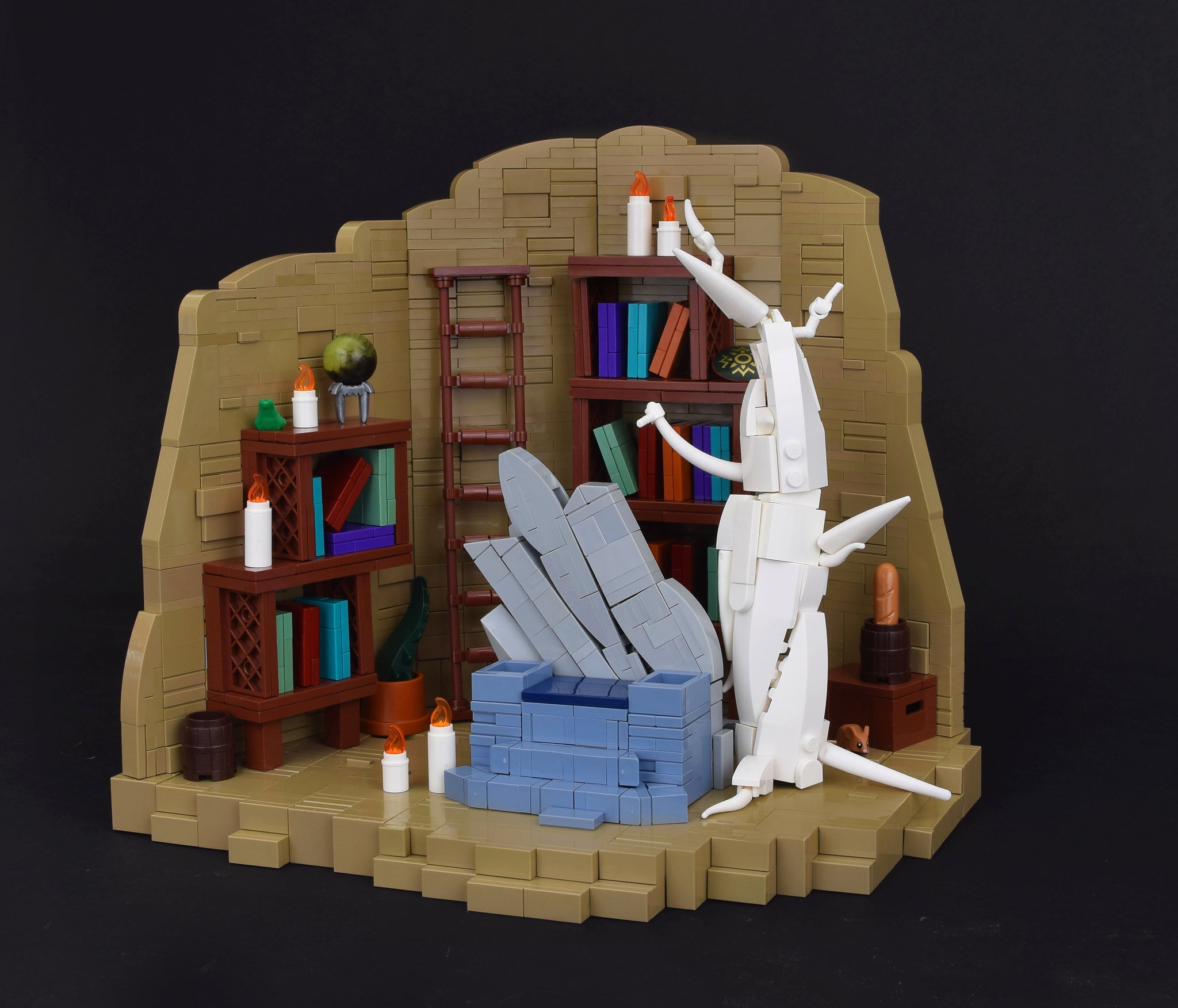
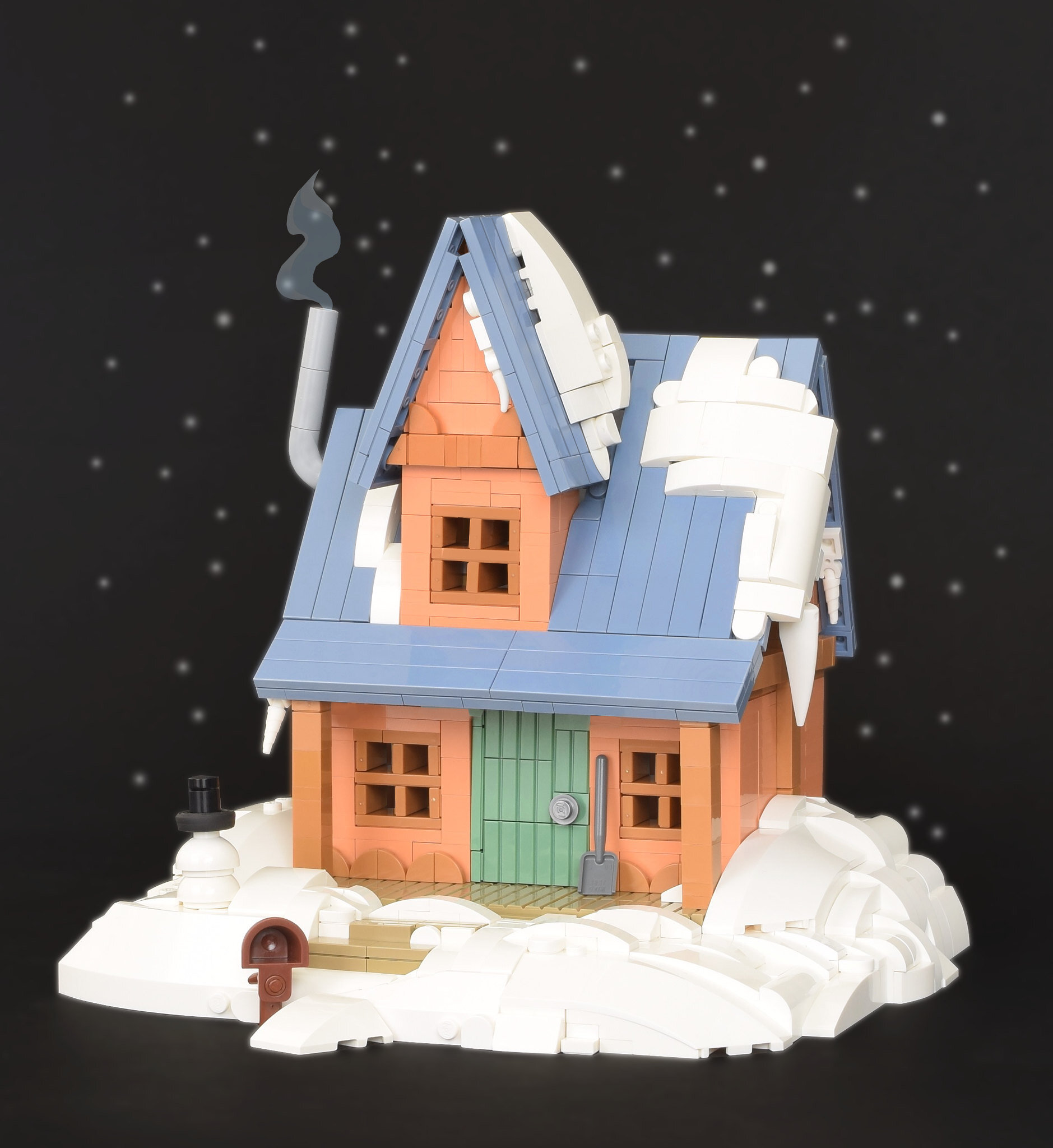
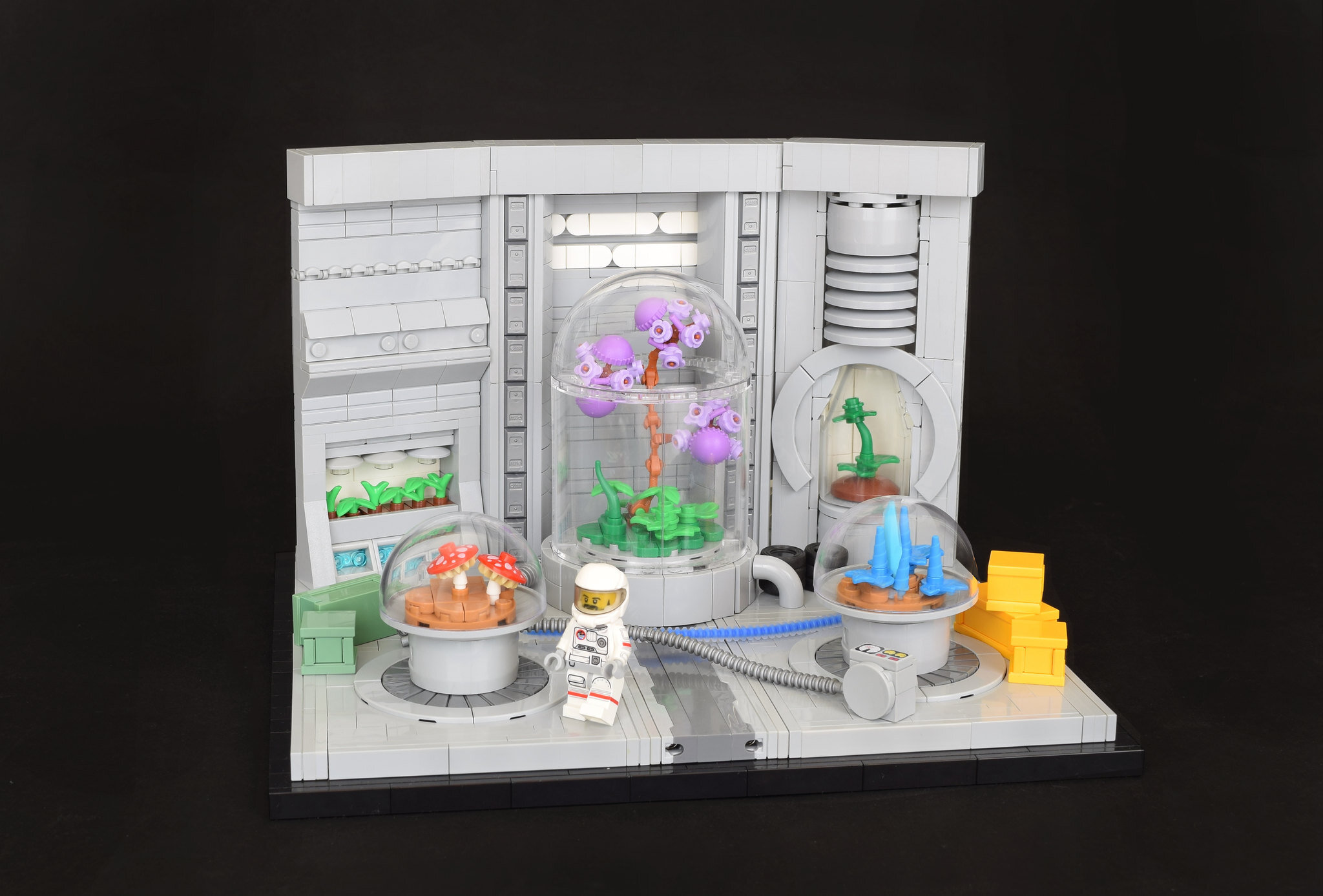
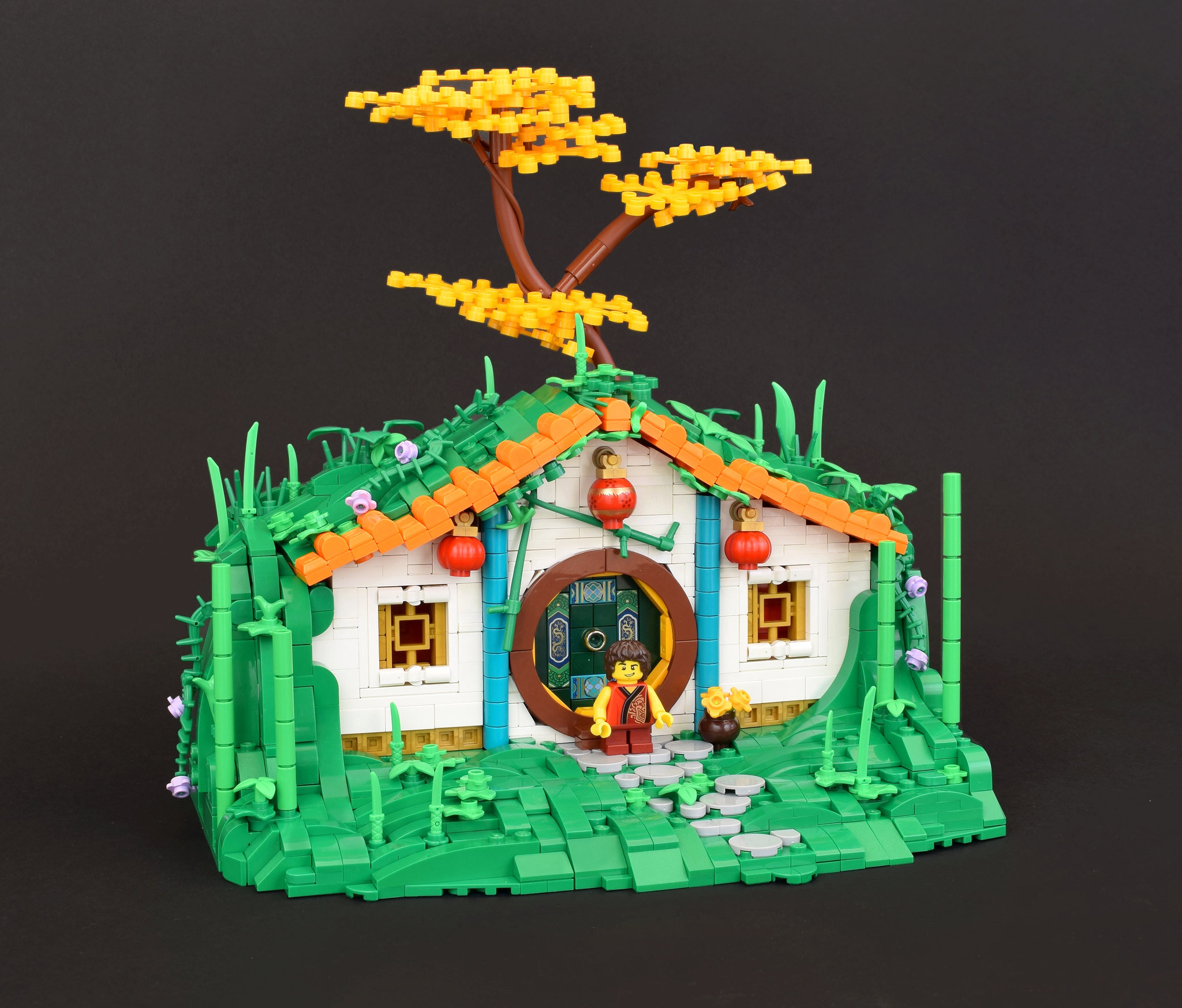
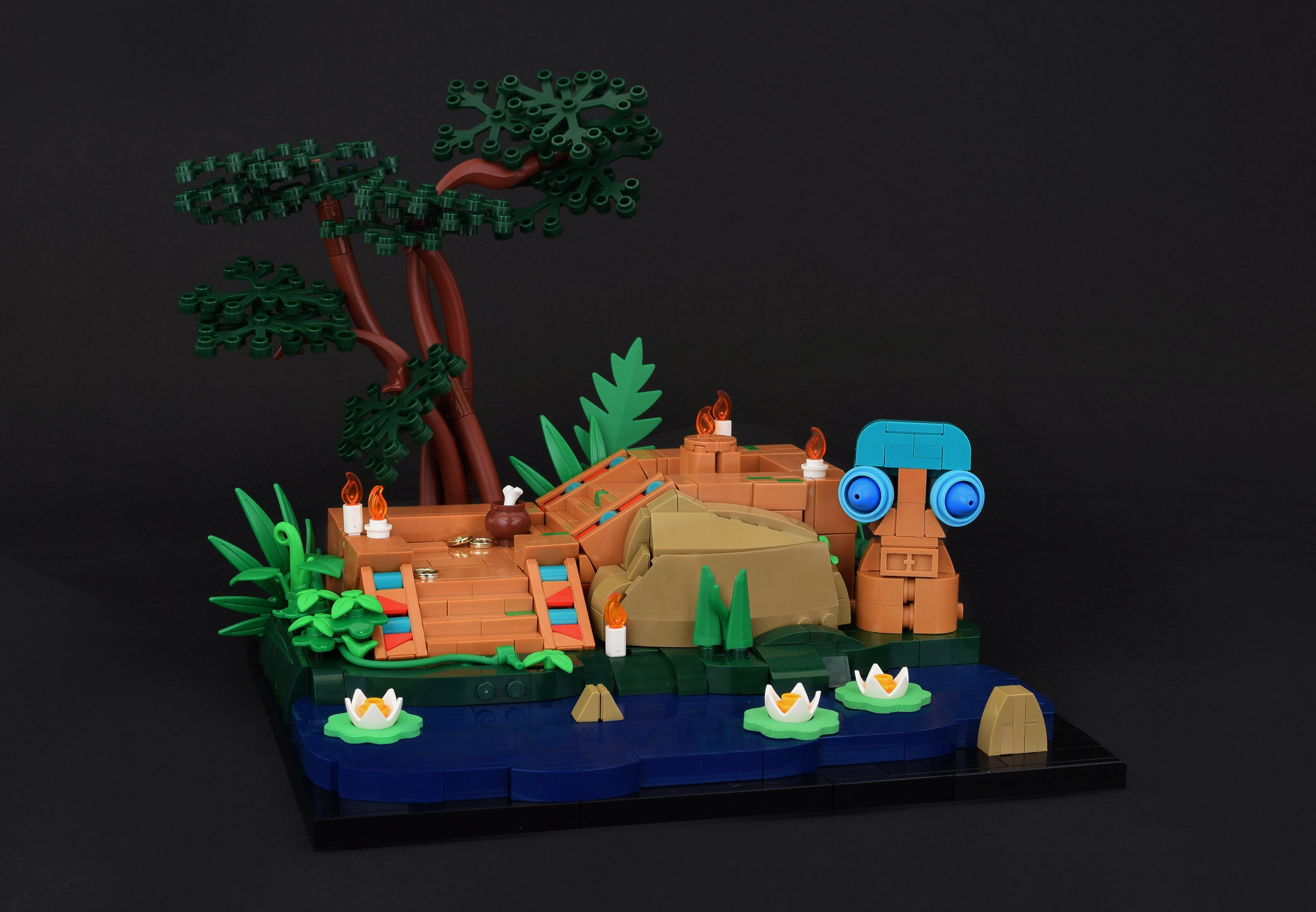
Doug: Last question. Kevin, would you like to highlight any other favorites of yours that stood out despite not winning a round?
Kevin: There were so many fantastic builds that did not make the top three of a day. However, the one that stood out to me in particular was CheesyStudios‘ Streets of Babylon. Once the first day ended, I was sure which builds would be the top four of the day—but had no idea which would end up being the top three.
Doug: In case any of our readers were not aware, CheeseyStudios is Caleb Schilling who is competing on the USA Lego Masters Season 2! Small world! And I bet last year’s Vignweek was great training to help him prepare for the tough reality show competition.
Alrighty, thanks so much for volunteering your time Kevin, it was not in vain. Verily that was no mere veneer of a tale, your verbose explanation vouchsafes our readers’ understanding of Vignweek!
Kevin: I guess I'll go by code name V now...
We hope you enjoyed learning about how RebelLUG's Vignweek worked from both the organizer and participant viewpoints. We’ve consistently seen Vignweek gather excellent builders and produce a bounty of brilliant builds, so stay tuned and consider joining up next year!
Have you built any fun vignettes? Share with us below in the comments section!
Do you want to help BrickNerd continue publishing articles like this one? Become a patron to show your support, get early access, exclusive swag and more.

